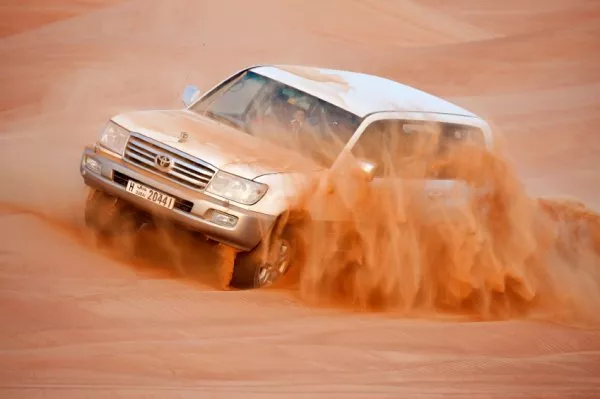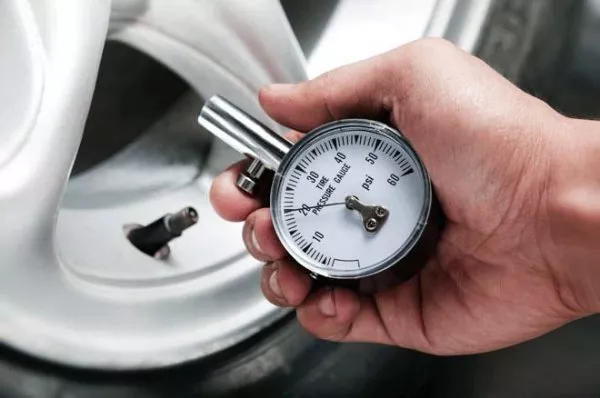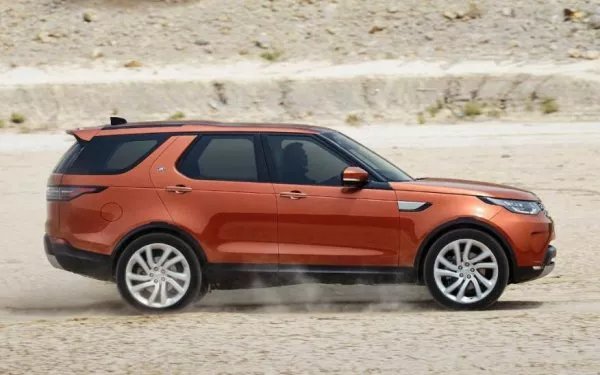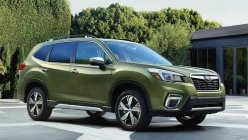Driving on sand is a common form of off-roading. Beaches, sand dunes are always an exhilarating experience for newbie off-roaders.
However, because sand is an unfamiliar type of terrain, it’s not easy for drivers to take a smooth drive. So if you plan to hit the sand, get well prepared with all driving knowledge in order to enjoy unforgettable moments of sand driving.
Here are some quick notes for sand driving:
1. Close your car windows
Keep the windows up if you don’t want your car to be covered in a mess of dust and sand. Not only does sand stain the interior, it also disturbs your concentration on driving by flying into your eyes.

Keep the windows up if you don’t want your car to be covered in a mess of dust and sand.
2. Set a right tire pressure
Actually, the best tire pressure for sand driving is between 16 psi to 18 psi.
When you let your tire pressure down to 16 psi, the size of tires footprint on sand will increase significantly. Besides, lowering the tire pressure also helps spread the vehicle weight all over the surface. This enables your car to smoothly move and float on the sand rather than digging in.

The best tire pressure for sand driving is 16 psi.
However, you must take caution because low tire pressure can make tires come off the rim, especially when turning. Accordingly, you need to drive much slower.
>>> View more: Tire safety tips and maintenance
3. Keep your momentum up
Correct tire pressure isn’t a cure-all for sand driving. A good driving technique is also required.

Keep your momentum up and stop only when you feel safe.
Sand can naturally sap your car’s power and make it get bogged. Therefore, the optimal solution for you is to keep your momentum up and to stop only when you feel safe.
When you want to make a turn on the sand, you should take notice of never making small circle turns. Instead, constant wide moderate speed turns is highly recommended.
4. Restrain the accelerator
Hammering the accelerator can stall the engine when your car starts to run on the sand.
Many drivers get into a bad driving habit of hastily accelerating at a lower gear. This makes your car badly bogged down since it builds up more sand in front of the wheels. Thus, accelerating steadily without shifting to a lower gear will move the car forward successfully.
One more thing to keep in mind is that you should make sure the wheels are all aligned forward before you start.
5. Choose a suitable vehicle
SUVs or other 4WD off-road vehicles are advised when you want to cruise on the sand whereas, a regular sedan, coupe or station wagon should not be considered.
The reason is that some modern 4WD vehicles like the Land Rover Discovery, Ford Everest are installed with the “sand mode”, which is favorable for cruising on the sand.

SUVs or other 4WD off-road vehicles are advised when you want to cruise on the sand
However, the gears, engine and torques specifications vary among vehicles. You should thoroughly consider before buying your tires in the sand.
Here are some quick notes for sand driving:
1. Close your car windows
Keep the windows up if you don’t want your car to be covered in a mess of dust and sand. Not only does sand stain the interior, it also disturbs your concentration on driving by flying into your eyes.

Keep the windows up if you don’t want your car to be covered in a mess of dust and sand.
Actually, the best tire pressure for sand driving is between 16 psi to 18 psi.
When you let your tire pressure down to 16 psi, the size of tires footprint on sand will increase significantly. Besides, lowering the tire pressure also helps spread the vehicle weight all over the surface. This enables your car to smoothly move and float on the sand rather than digging in.

The best tire pressure for sand driving is 16 psi.
>>> View more: Tire safety tips and maintenance
3. Keep your momentum up
Correct tire pressure isn’t a cure-all for sand driving. A good driving technique is also required.

Keep your momentum up and stop only when you feel safe.
When you want to make a turn on the sand, you should take notice of never making small circle turns. Instead, constant wide moderate speed turns is highly recommended.
4. Restrain the accelerator
Hammering the accelerator can stall the engine when your car starts to run on the sand.
Many drivers get into a bad driving habit of hastily accelerating at a lower gear. This makes your car badly bogged down since it builds up more sand in front of the wheels. Thus, accelerating steadily without shifting to a lower gear will move the car forward successfully.
One more thing to keep in mind is that you should make sure the wheels are all aligned forward before you start.
5. Choose a suitable vehicle
SUVs or other 4WD off-road vehicles are advised when you want to cruise on the sand whereas, a regular sedan, coupe or station wagon should not be considered.
The reason is that some modern 4WD vehicles like the Land Rover Discovery, Ford Everest are installed with the “sand mode”, which is favorable for cruising on the sand.

SUVs or other 4WD off-road vehicles are advised when you want to cruise on the sand










